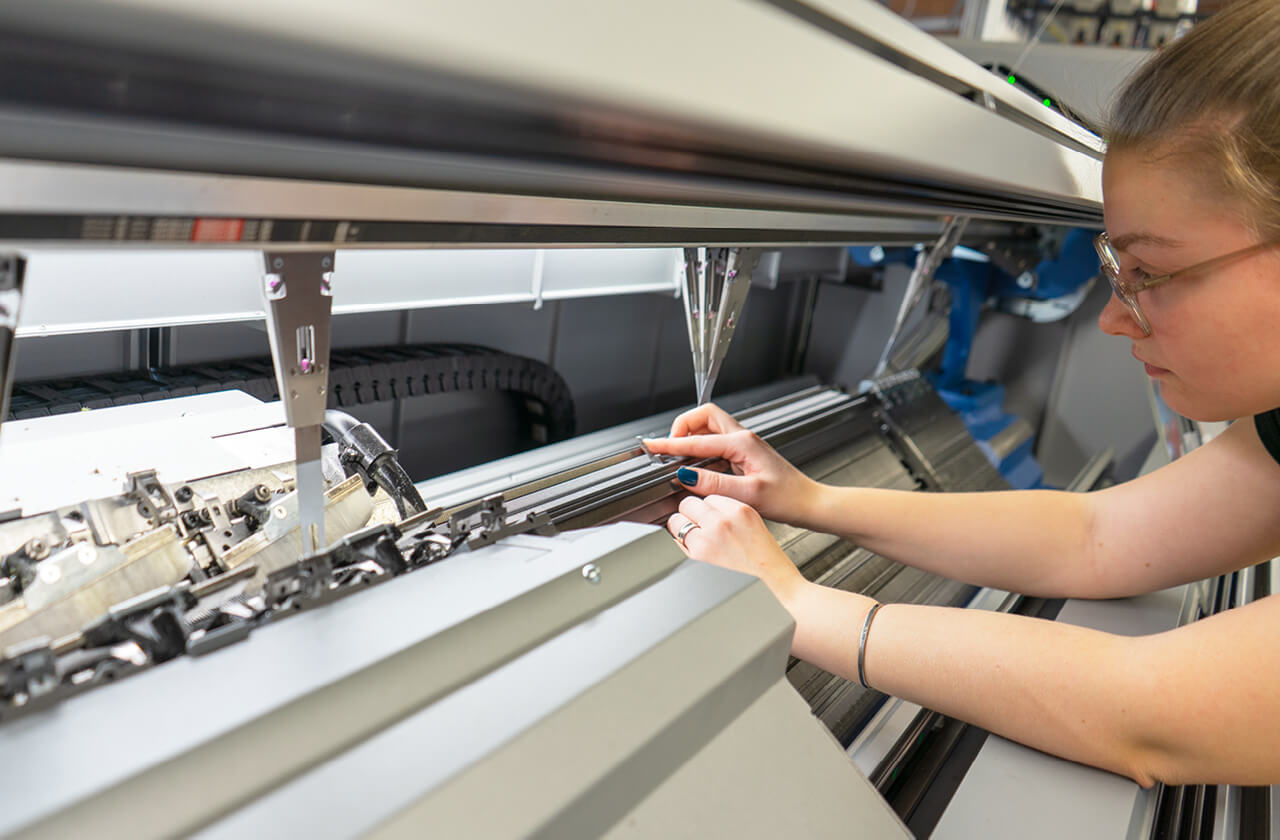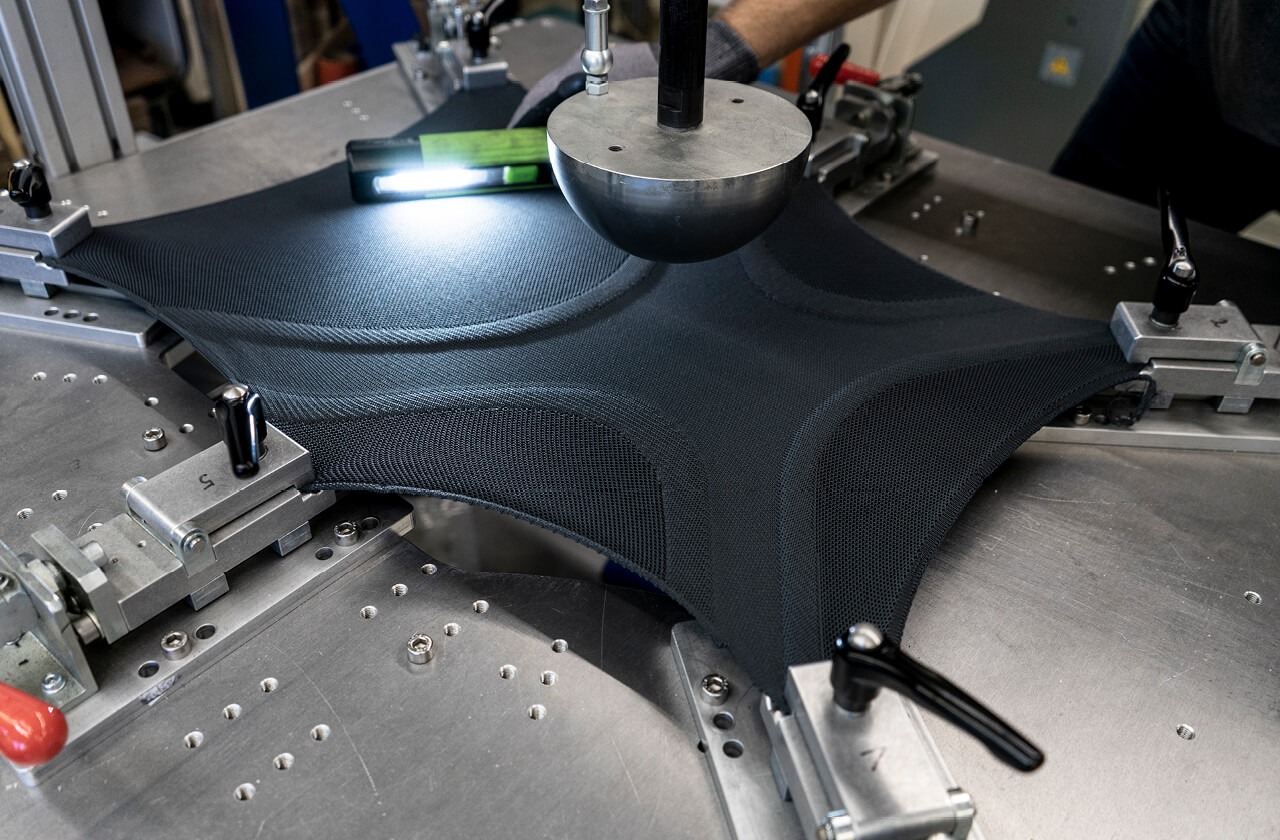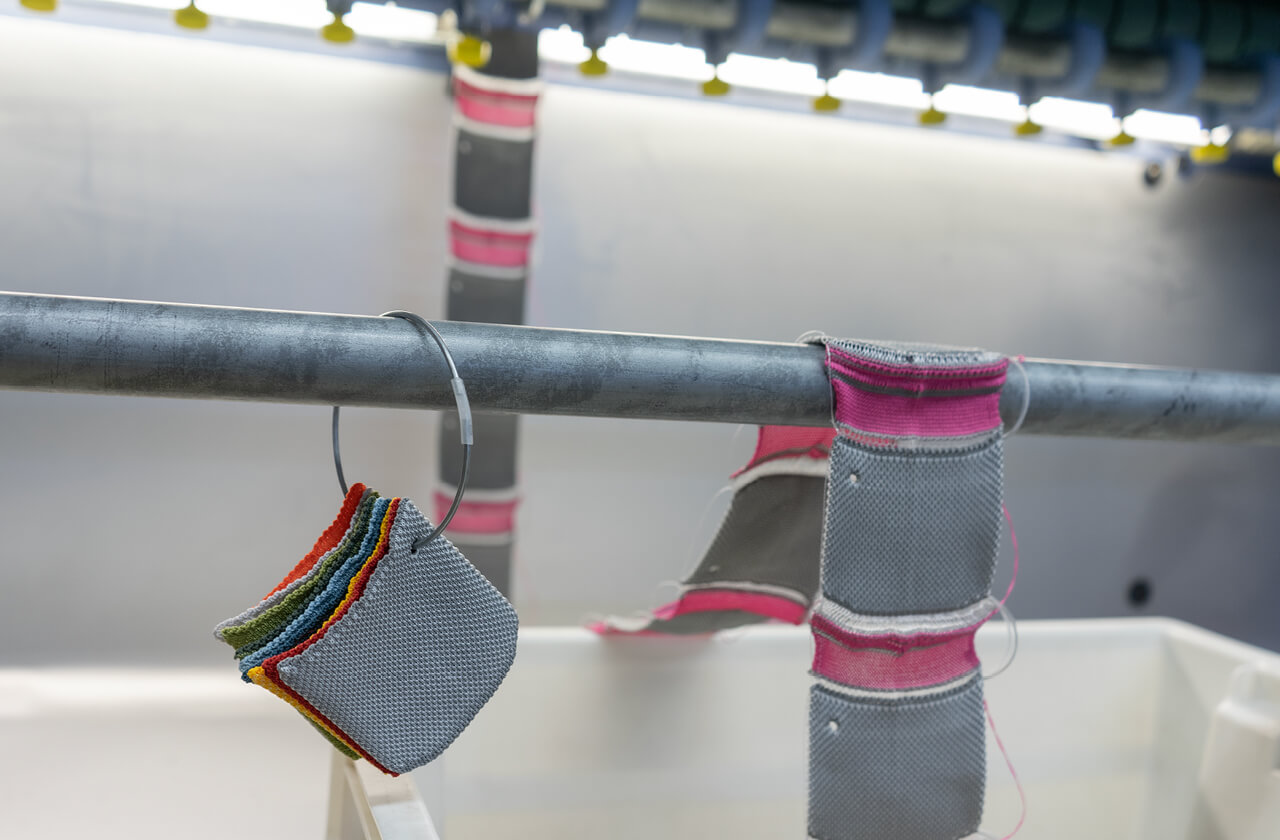Knitting Technology
Over the past decades, we have established ourselves as innovation leaders in flat-knitted technical textiles. Kobleder was the first knitter to establish knitwear in the furniture industry. Millions of load cycles have proven that our textiles are perfectly suited for all types of furniture, even as self-supporting structures.Our mission remains unchanged: We continuously work on new ideas and projects in close collaboration with universities and research new materials and technologies. We strive daily to develop innovative knitting solutions. Knitted shoes were unthinkable 15 years ago; now we are already working on knitted strollers, various carrying systems, and bags.The field of 3D spacer knits is coming into focus. Thanks to the advancement of knitting machines, we can now seamlessly knit sweaters that come finished from the machine.
read more

